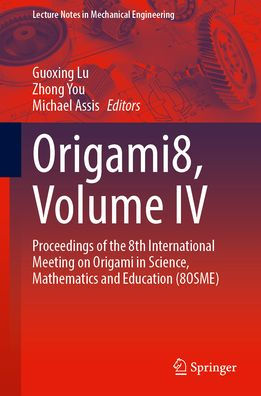We witness increasing interests in origami from researchers, practitioners and artists. Of a special note is the rapidly growing research in origami engineering, a distinctive field with fundamental concepts and applications related to space, mechanical, material, medical and structural engineering etc.
Participants of 8OSME should find great passion and opportunity of collaborations across disciplines of origami. We hope these four volumes will inspire not just currently active researchers and artists, but also the next generation of origami scientists, mathematicians, engineers, designers, historians, and teachers.
We witness increasing interests in origami from researchers, practitioners and artists. Of a special note is the rapidly growing research in origami engineering, a distinctive field with fundamental concepts and applications related to space, mechanical, material, medical and structural engineering etc.
Participants of 8OSME should find great passion and opportunity of collaborations across disciplines of origami. We hope these four volumes will inspire not just currently active researchers and artists, but also the next generation of origami scientists, mathematicians, engineers, designers, historians, and teachers.

Origami8, Volume IV: Proceedings of the 8th International Meeting on Origami in Science, Mathematics and Education (8OSME)
487
Origami8, Volume IV: Proceedings of the 8th International Meeting on Origami in Science, Mathematics and Education (8OSME)
487Hardcover

Product Details
| ISBN-13: | 9789819667109 |
|---|---|
| Publisher: | Springer Nature Singapore |
| Publication date: | 11/02/2025 |
| Series: | Lecture Notes in Mechanical Engineering |
| Pages: | 487 |
| Product dimensions: | 6.10(w) x 9.25(h) x (d) |
